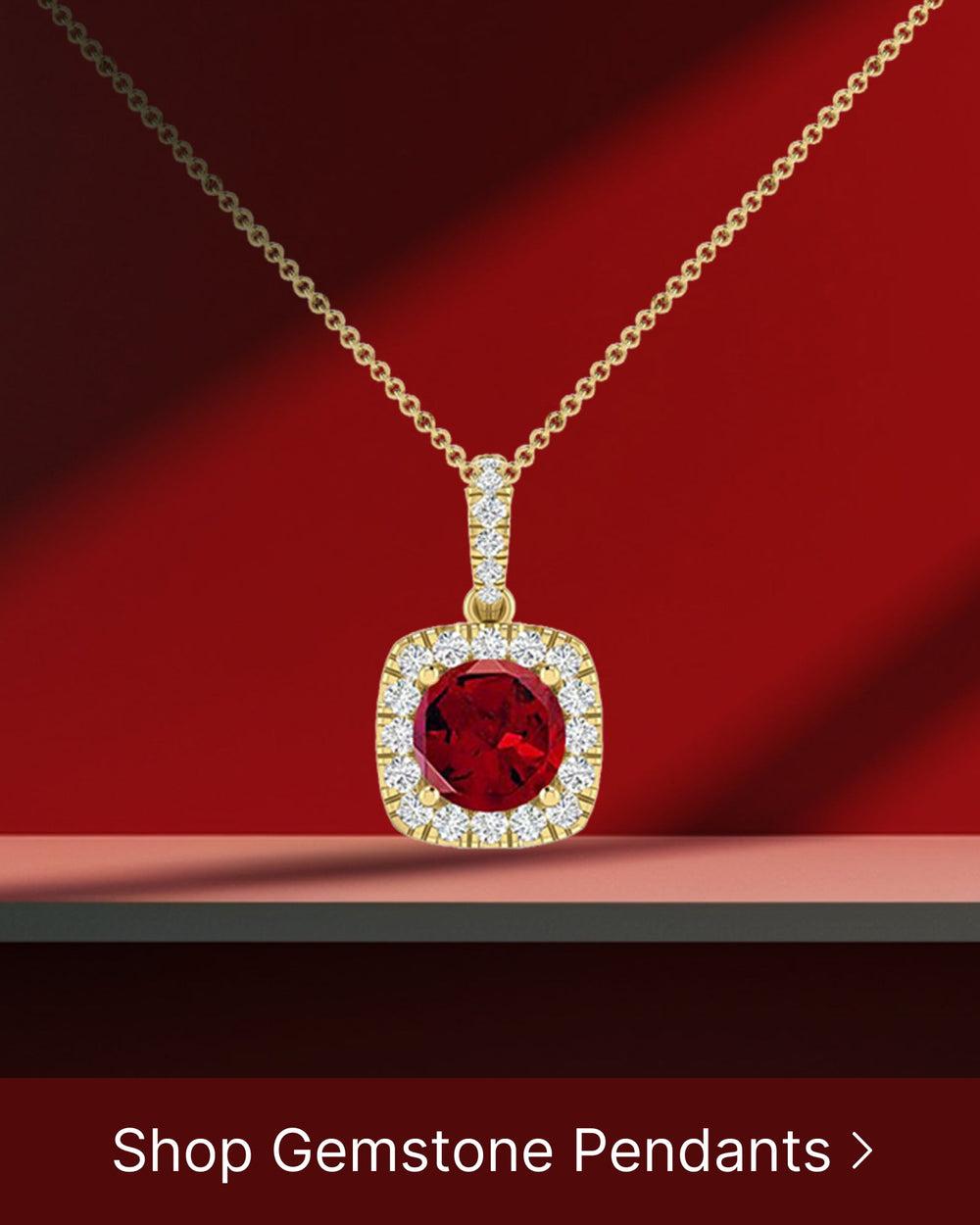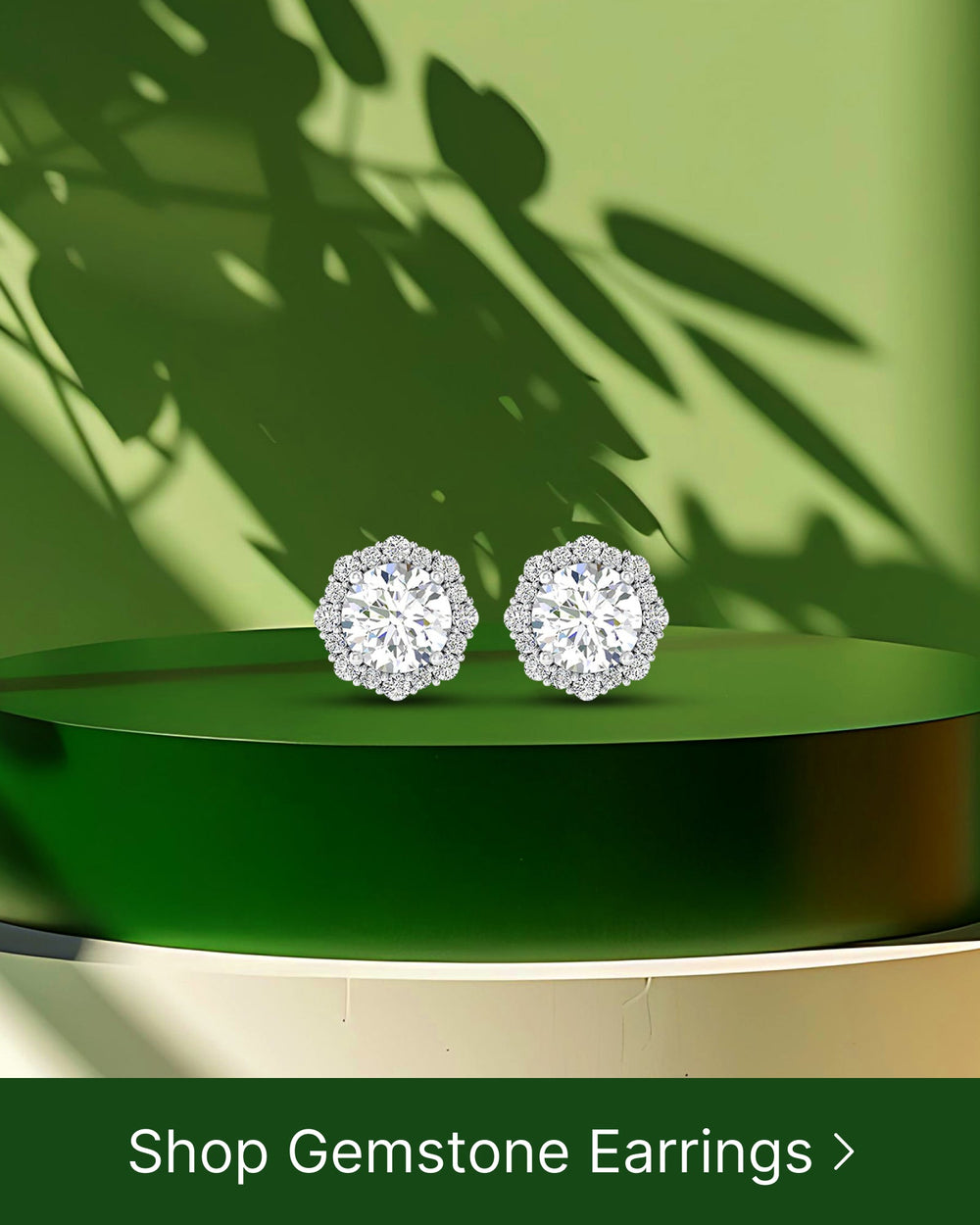The 1920s was a transformative era marked by cultural, social, and artistic change. This article explores the engagement ring trends that emerged during this period and the lasting impact they have had on modern jewelry designs. From the influence of Art Deco to the symbolism found in 1920s engagement rings, we will delve into the rich history and significance behind these timeless pieces.
Understanding the 1920s Era
The Roaring Twenties, as the decade is often referred to, was a time of immense cultural and societal change. The aftermath of World War I brought about a sense of liberation and newfound freedom. This newfound attitude was reflected in various aspects of life, including fashion, music, and of course, jewelry. The rise of the Art Deco movement played a significant role in shaping the design aesthetic of the era.
The 1920s saw a departure from the modest and conservative styles of the past. Women began to embrace more relaxed silhouettes, shorter hemlines, and bolder fashion choices. This shift in attitude was also reflected in the jewelry they adorned.
The iconic flapper style became synonymous with the era, characterized by its beaded dresses, feathered headpieces, and statement jewelry. Engagement rings were no exception, as they became an expression of individuality and personal style.
During the 1920s, women were no longer confined to traditional engagement ring styles. Instead, they sought out unique and unconventional designs that reflected their own personalities. Art Deco engagement rings, with their bold geometric shapes and intricate detailing, perfectly captured the spirit of the era.
The Roaring Twenties: A Time of Change
The 1920s were a time of great social and cultural change. The end of World War I brought about a sense of optimism and excitement for the future. Women, in particular, experienced newfound freedom and independence during this time.
With the introduction of the 19th Amendment in 1920, women were granted the right to vote, marking a significant milestone in the fight for gender equality. This newfound political power translated into a desire for self-expression and individuality, which was reflected in the fashion choices of the era.
Women began to embrace shorter hemlines, opting for dresses that allowed them to move more freely. The iconic flapper style emerged, characterized by its loose, drop-waist silhouette and embellishments such as fringe and sequins. This new style was a stark departure from the corsets and restrictive clothing of the past, symbolizing a break from societal norms.
Alongside the fashion revolution, the 1920s also witnessed a cultural shift in music and entertainment. Jazz music, with its lively rhythms and improvisational nature, became the soundtrack of the era. Dance halls and speakeasies sprung up, providing a space for people to let loose and enjoy themselves. The energetic and carefree atmosphere of these venues further fueled the desire for bold and expressive fashion choices.
Influence of Art Deco on Jewelry Design
Art Deco was an influential art and design movement that emerged in the 1920s and continued through the 1930s. It was characterized by its geometric shapes, bold colors, and symmetrical patterns. The clean lines and intricate detailing of Art Deco design heavily influenced engagement ring styles of the era.
Art Deco engagement rings often featured geometric cuts, such as baguette or emerald-cut diamonds, set alongside vibrant accents of colored gemstones. The use of platinum, with its lightweight and durable properties, also became increasingly popular during this time.
Art Deco jewelry was known for its attention to detail and craftsmanship. Intricate filigree work, milgrain detailing, and delicate engraving were all common features of Art Deco engagement rings. These intricate designs added a touch of elegance and sophistication to the bold and geometric shapes, creating a harmonious balance between modernity and classic beauty.
As the 1920s progressed, Art Deco jewelry continued to evolve. The influence of Egyptian and Oriental motifs became more prominent, adding an exotic and luxurious touch to the designs. The use of vibrant gemstones, such as emeralds, rubies, and sapphires, further enhanced the visual impact of these stunning pieces.
Overall, the 1920s was a transformative era in both fashion and jewelry design. The spirit of liberation and individuality that defined the Roaring Twenties was perfectly captured in the bold and innovative designs of Art Deco engagement rings. These timeless pieces continue to inspire and captivate us today, serving as a reminder of a bygone era filled with excitement and possibility.
Popular Engagement Ring Styles of the 1920s
During the 1920s, several distinct styles of engagement rings gained popularity. Let us explore some of the most sought-after trends of the era.
The Rise of Platinum Rings
The introduction of platinum as a favored metal for engagement rings revolutionized the jewelry industry. Its strength and versatility allowed for intricate designs and delicate settings. Platinum rings became a statement of luxury and sophistication.
Milgrain detailing, a decorative technique where tiny beads or lines are added along the edges of a piece, was commonly used in platinum engagement rings. This added texture and intricacy to the design, enhancing its overall aesthetic.
The Allure of Filigree Settings
Filigree, a technique that involves twisting and bending fine threads of metal to create decorative patterns, became a hallmark of 1920s engagement rings. The delicate and intricate nature of filigree work added a sense of elegance and femininity to the rings.
Engagement rings adorned with filigree settings often featured intricate floral motifs or geometric patterns. This craftsmanship added depth and dimension to the rings, making them truly unique.
The Popularity of Old European Cut Diamonds
The 1920s saw a shift in diamond cutting styles. Old European cut diamonds, which featured larger facets and rounded shapes, became the preferred choice for engagement rings. These diamonds emitted a dazzling sparkle that captivated those who wore them.
The romantic and vintage appeal of old European cut diamonds perfectly complemented the Art Deco aesthetic. The combination of the geometric settings and the brilliant sparkle of the diamonds created a striking contrast that set these rings apart.
Symbolism in 1920s Engagement Rings
Beyond their aesthetic appeal, 1920s engagement rings often held symbolic meanings. Let us explore the significance behind some of the common symbols found in these beautiful pieces.
The Meaning Behind Geometric Designs
The geometric shapes seen in 1920s engagement rings were not merely decorative; they held deeper symbolism. Triangles, for example, were representative of strength and stability. Circles symbolized eternal love and commitment.
These shapes were consciously incorporated into the design to convey profound meanings and sentiments, making these rings not just beautiful but also deeply meaningful.
The Significance of Colored Gemstones
Colored gemstones, particularly sapphires and rubies, gained popularity during the 1920s. These vibrant and eye-catching stones held symbolic significance. Sapphires, with their rich blue hue, represented loyalty and fidelity. Rubies, with their fiery red tones, symbolized love and passion.
By incorporating these colored gemstones into engagement rings, couples were able to personalize their rings further and infuse them with even deeper meaning.
The Impact of the 1920s on Modern Engagement Ring Trends
The timeless styles and innovative designs of 1920s engagement rings continue to influence modern jewelry trends. Let us explore the lasting impact of this iconic era.
The Resurgence of Vintage Styles
In recent years, there has been a renewed interest in vintage engagement ring styles. The intricate detailing, unique gemstone combinations, and the overall charm of 1920s rings have captivated modern couples seeking a ring with character and history.
Designers have incorporated elements of Art Deco and filigree work into contemporary engagement ring designs, creating a fusion of old-world elegance and modern sophistication.
The Lasting Influence of Art Deco Design
Art Deco design continues to be celebrated for its boldness and geometric brilliance. The clean lines, symmetrical patterns, and emphasis on contrasting colors have left an indelible mark on modern engagement ring styles.
Contemporary ring designers often draw inspiration from this era, incorporating geometric cuts and using colored gemstones to add a unique touch to their creations.
Caring for Vintage Engagement Rings
Vintage engagement rings require extra care and attention to preserve their beauty and longevity. Here are some tips for maintaining these precious heirlooms.
Tips for Maintaining Antique Jewelry
It is essential to clean vintage engagement rings regularly to remove any dirt or debris that may accumulate over time. However, it is crucial to use gentle cleaning solutions and avoid harsh chemicals that could damage the delicate settings or gemstones.
Additionally, it is advisable to have vintage engagement rings inspected by a professional jeweler regularly. They can identify any potential issues, such as loose stones or weakened prongs, and provide necessary repairs.
The Importance of Regular Professional Cleaning
Professional cleaning not only helps maintain the overall appearance of vintage engagement rings but also ensures that any hidden damage or issues are addressed promptly. A professional jeweler can safely clean the ring, assess its condition, and make any necessary repairs.
By investing in regular professional cleanings, couples can ensure that their precious vintage rings remain as beautiful and beloved as the day they were first worn.
In conclusion, the engagement ring trends of the 1920s continue to captivate and inspire jewelry enthusiasts today. The influence of the Art Deco movement, the popularity of platinum rings, and the symbolic meanings found in these beautiful pieces make them cherished heirlooms. As we embrace vintage styles and continue to draw inspiration from the past, the legacy of these timeless designs lives on in modern engagement rings.





